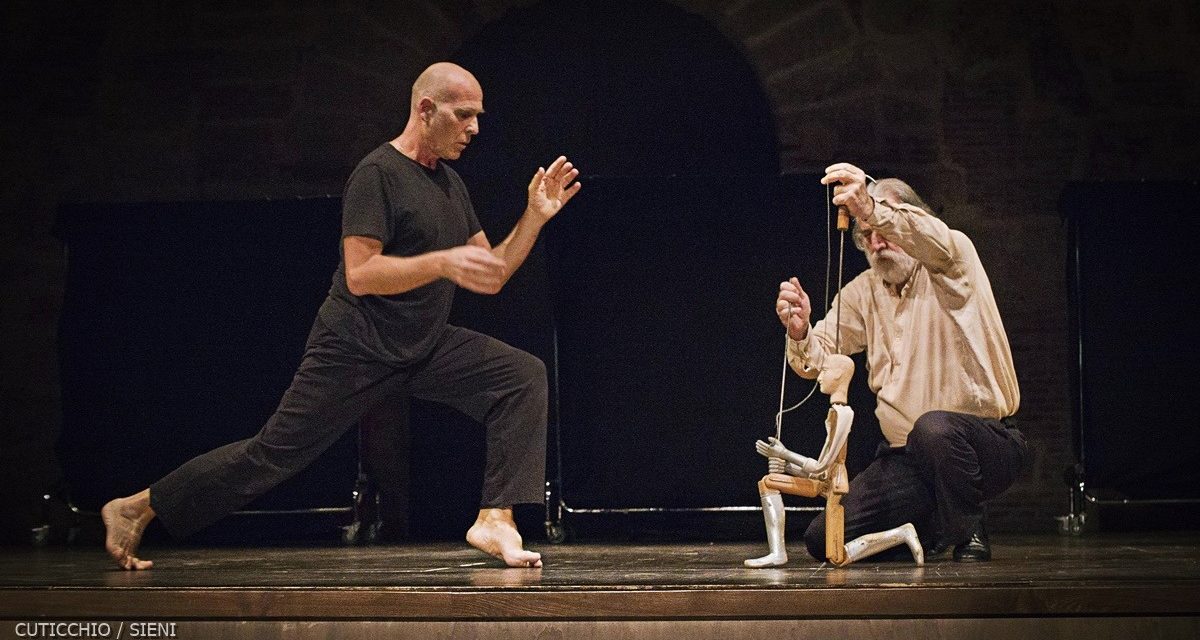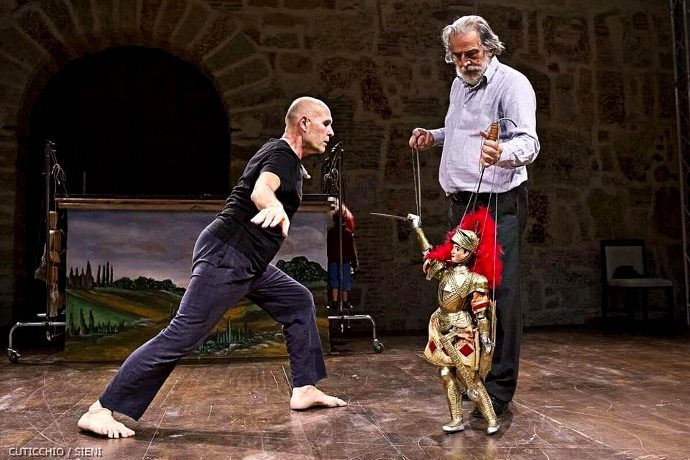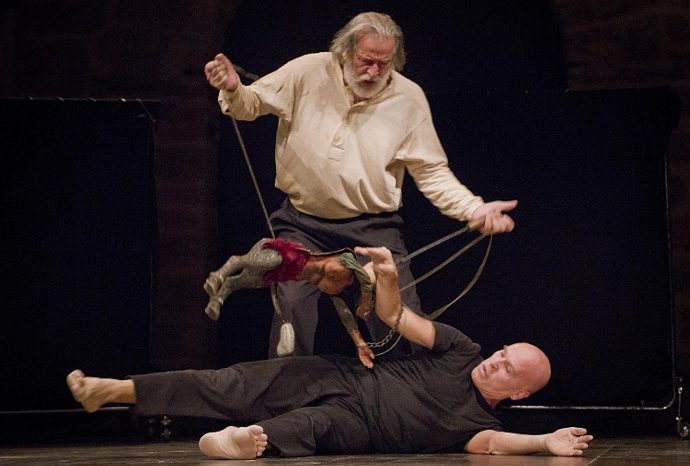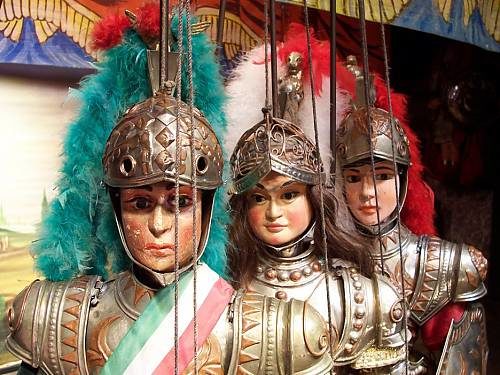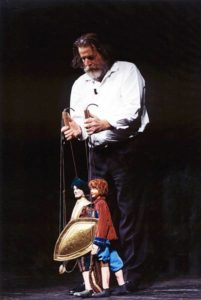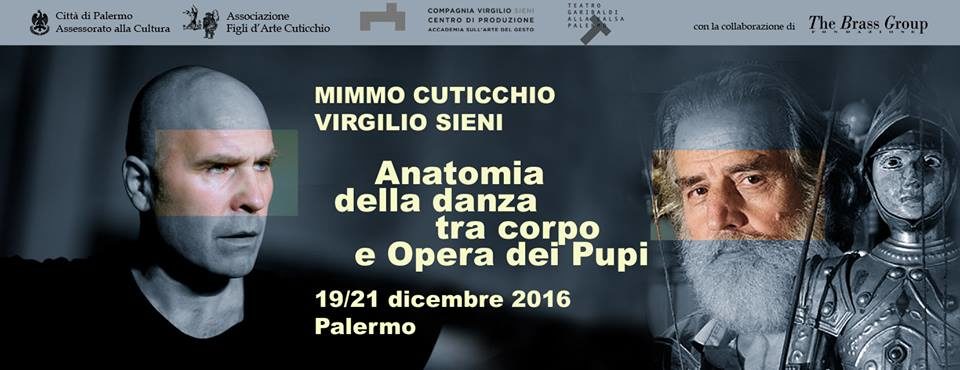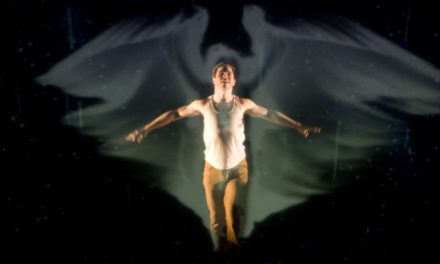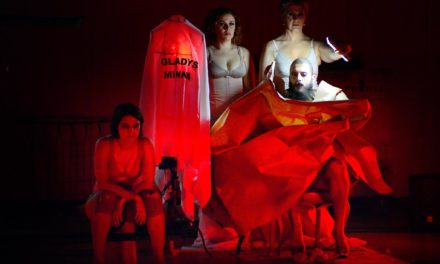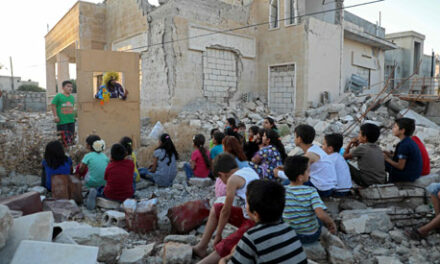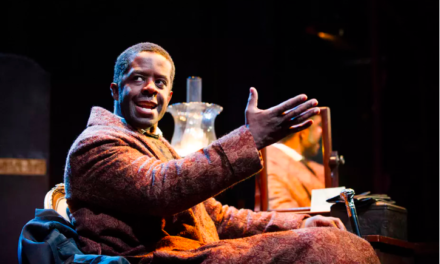Virgilio Sieni is one of the most important Italian dancers and choreographers, and Mimmo Cuticchio is one of the most appreciated heirs of Sicilian puppet theatre (Opera dei Pupi). The result of their collaboration is a three-year project for 2016–2018: the first part, Atlante. L’umano del gesto (Atlas. The Human of Gesture), was staged in Palermo, at the Real Teatro di Santa Cecilia, on 22 December 2016.
After a theatre workshop on 19–21 December 2016, their performance was aimed at discovering the secrets and the emotions of the body in multiple dimensions. Various types of “actors,” with their physical nature and their capacity for gesticulation, were involved: the human body of the dancer (Virgilio Sieni), the artificial body of the puppets (Orlando and the main characters of the Sicilian tradition), and—acting as necessary mediators—the puppeteers (Mimmo Cuticchio and his brother Nino), thanks to whom the puppets can live on the stage.
The staging is a sort of dialogue about the most common gestures of everyday life: walking, sitting down, falling down, etc. The reactions of the human body are counterbalanced by those of the puppets—in a mixture of vitality, frailty, agility. The final outcome is a mutual transfiguration of bodies and gestures: the dancer is able to reach the artificial level in his physical expressiveness, and the puppets disclose the human aspects of their artificial nature.
https://www.youtube.com/watch?v=5Ql7DxcWILE%20
The Sicilian puppet theatre, Opera dei Pupi, was proclaimed by UNESCO in 2001, and inscribed in 2008 on the UNESCO Representative List of the Intangible Cultural Heritage of Humanity. In ancient times, the epic gestures of Orlando became the subject of the most popular form of entertainment in Sicily, and this legacy has survived with the work of some local family companies—such as the Cuticchio family.
In theatre history, the puppet is considered a skilled imitation of humans; its wooden body can reveal all the emotions of the human soul. The puppeteer is a master in the art of directing, and the real father of the wooden actor: he creates its body, he chooses the clothes, he determines the movements using strings and metal wires, he modulates the voice in order to express its emotions, he demonstrates its skill with the sword in the fights against the enemies or evil, he knows its courage in the moment of death. The plot is traditional, but the dialogues are based on improvisation.
From the anthropological point of view, the performance by Virgilio Sieni and Mimmo Cuticchio is the perfect demonstration of this secular tradition: the wooden body of the puppet is reflected in the human body of the dancer, and vice versa. But this is not a simple correspondence: they have generated a poetic and spiritual investigation, with the awareness of their mutual limits as living creatures on the stage. It is a revelation, a relation, a contact of identities. Of course, it is the beginning of something else: a new form of performance for the New Millennium, born from the great union of Sicilian puppetry and contemporary dance.
Official websites: http://www.virgiliosieni.it/ and http://www.figlidartecuticchio.com/
This post was written by the author in their personal capacity.The opinions expressed in this article are the author’s own and do not reflect the view of The Theatre Times, their staff or collaborators.
This post was written by Maria Pia Pagani.
The views expressed here belong to the author and do not necessarily reflect our views and opinions.

